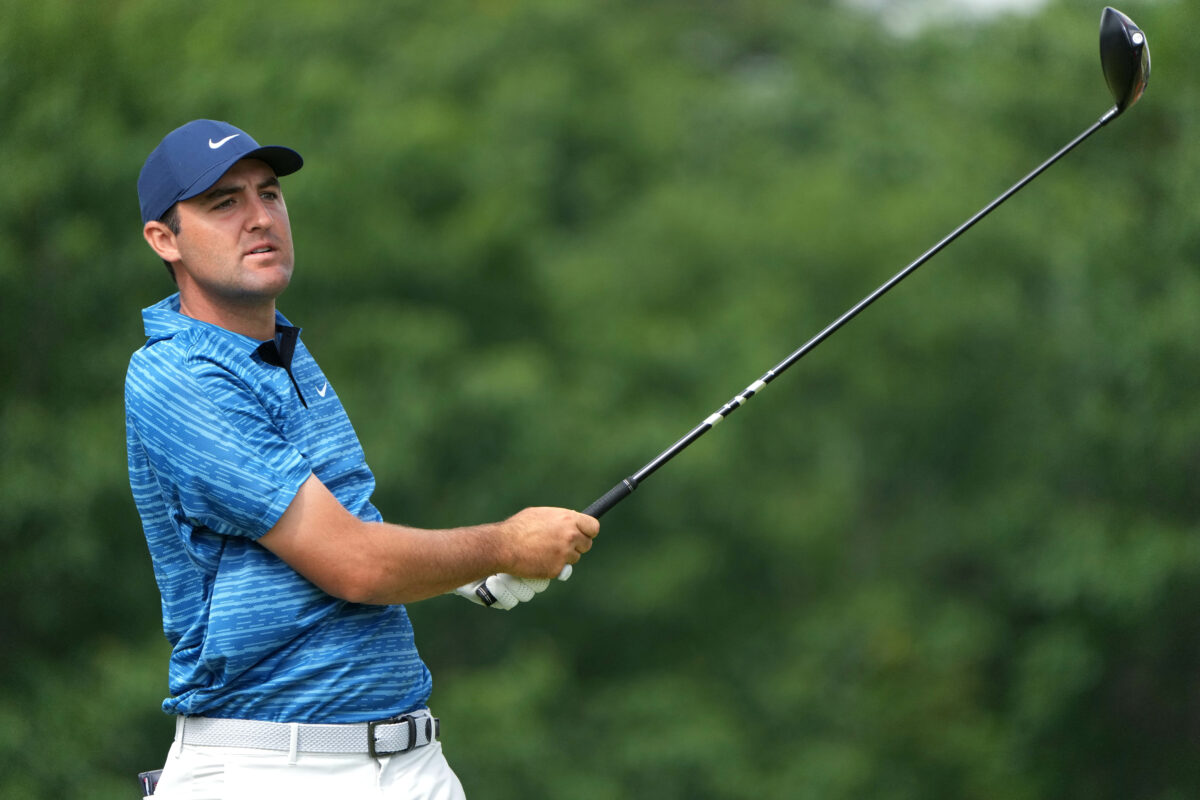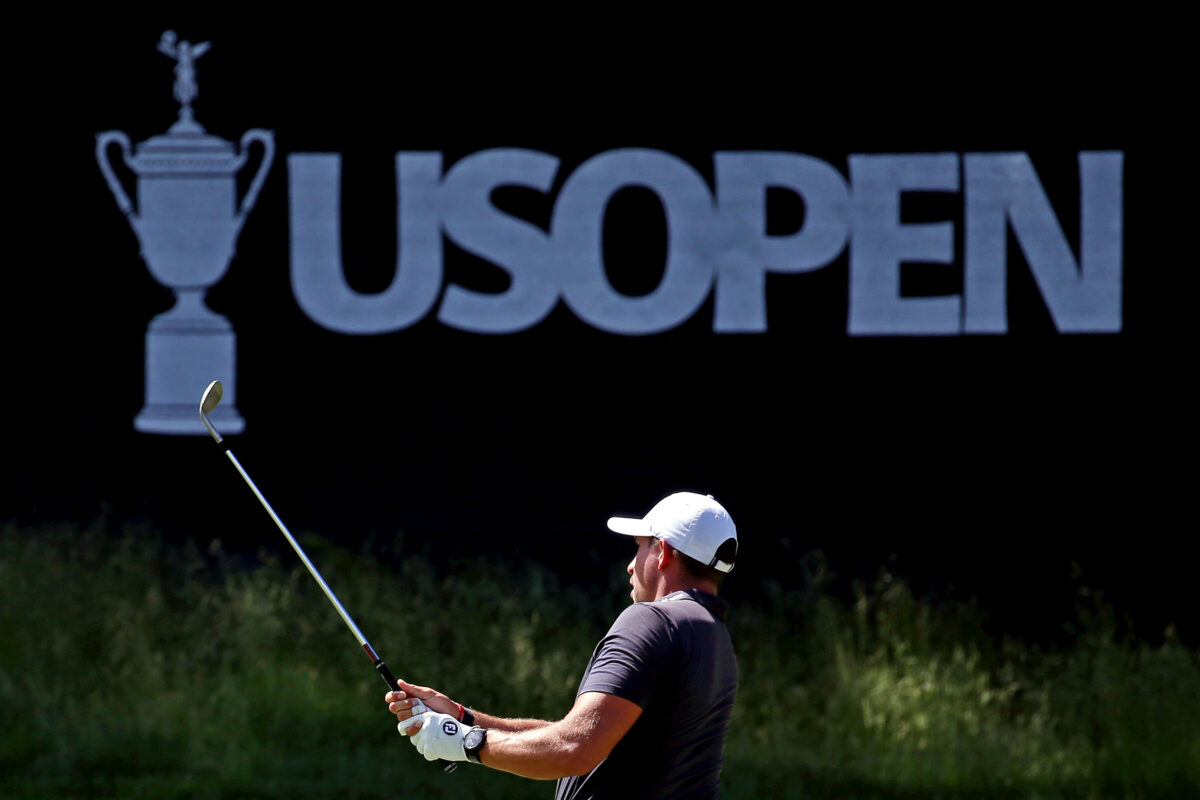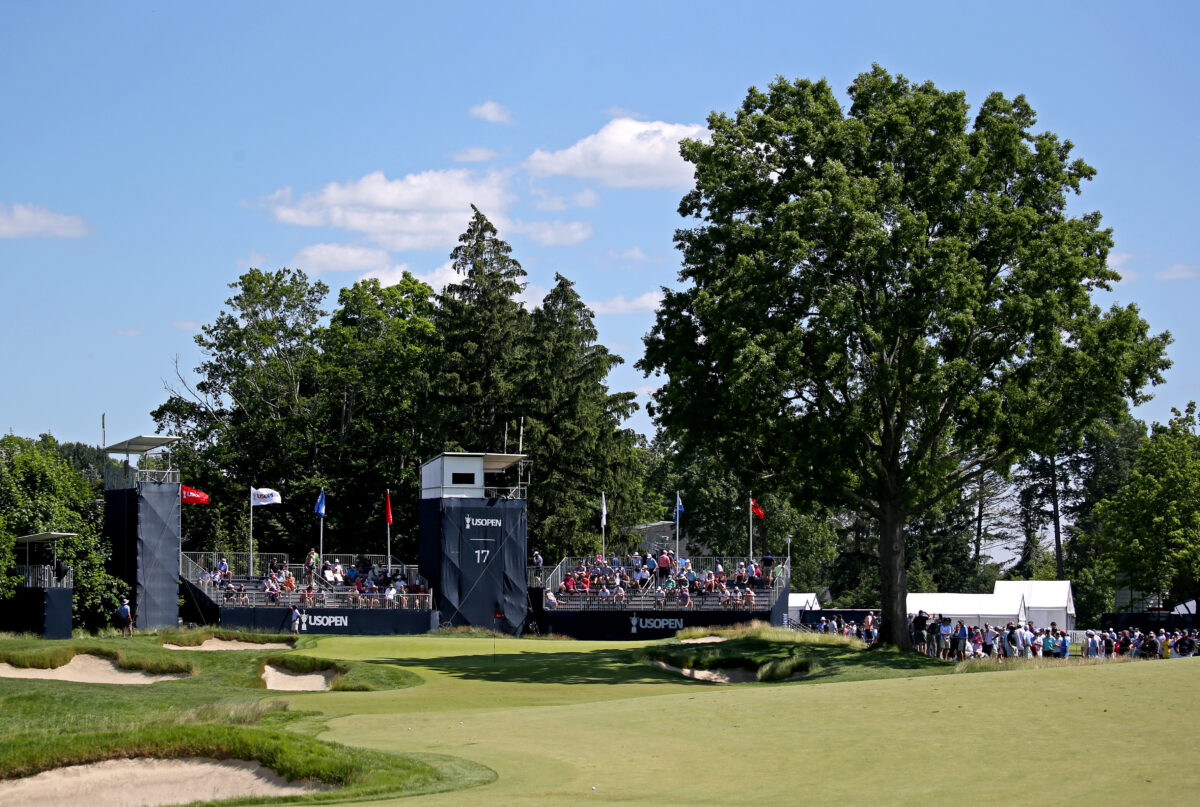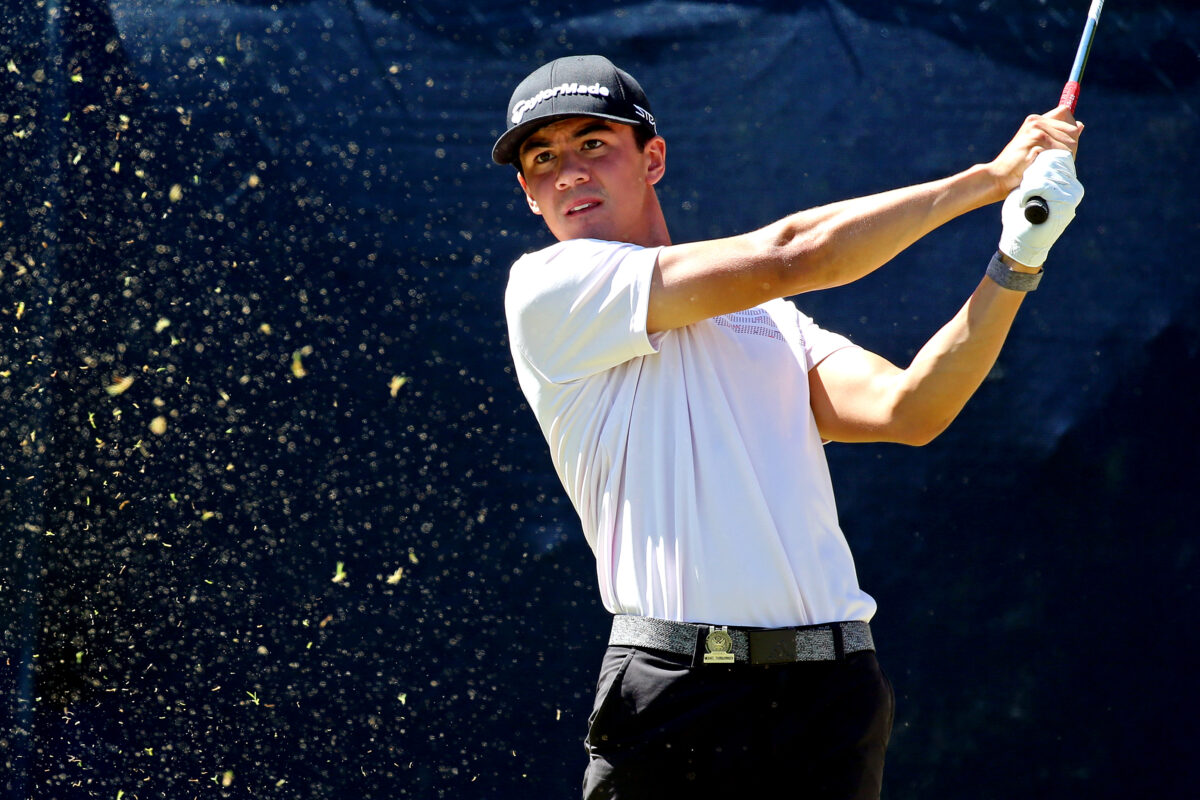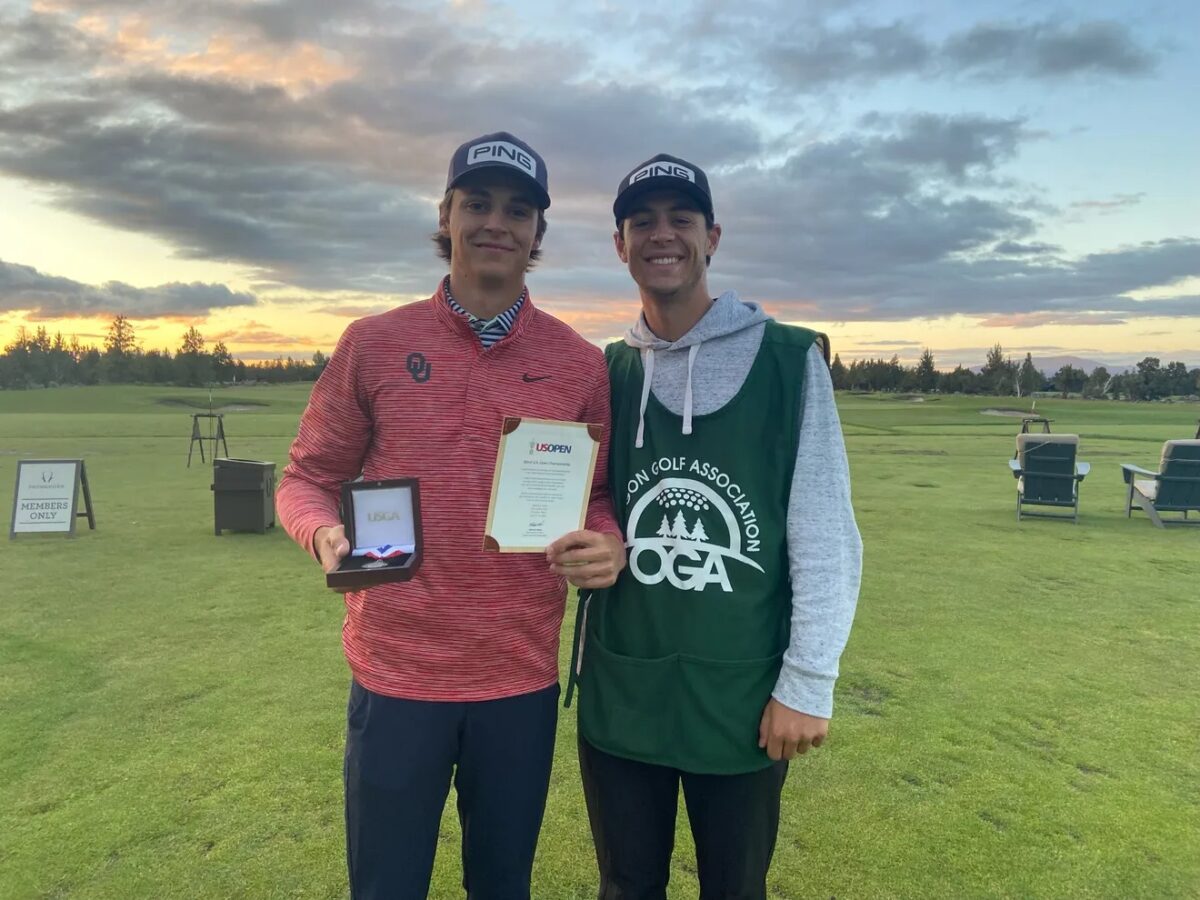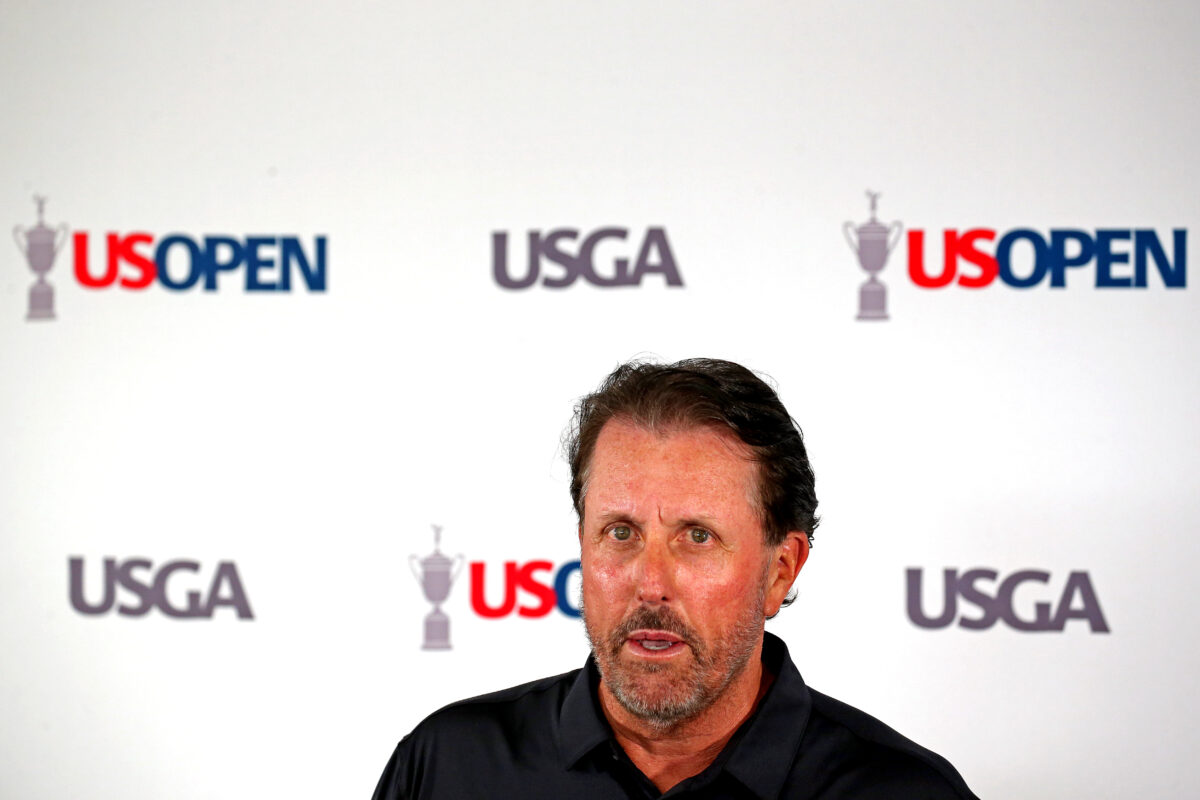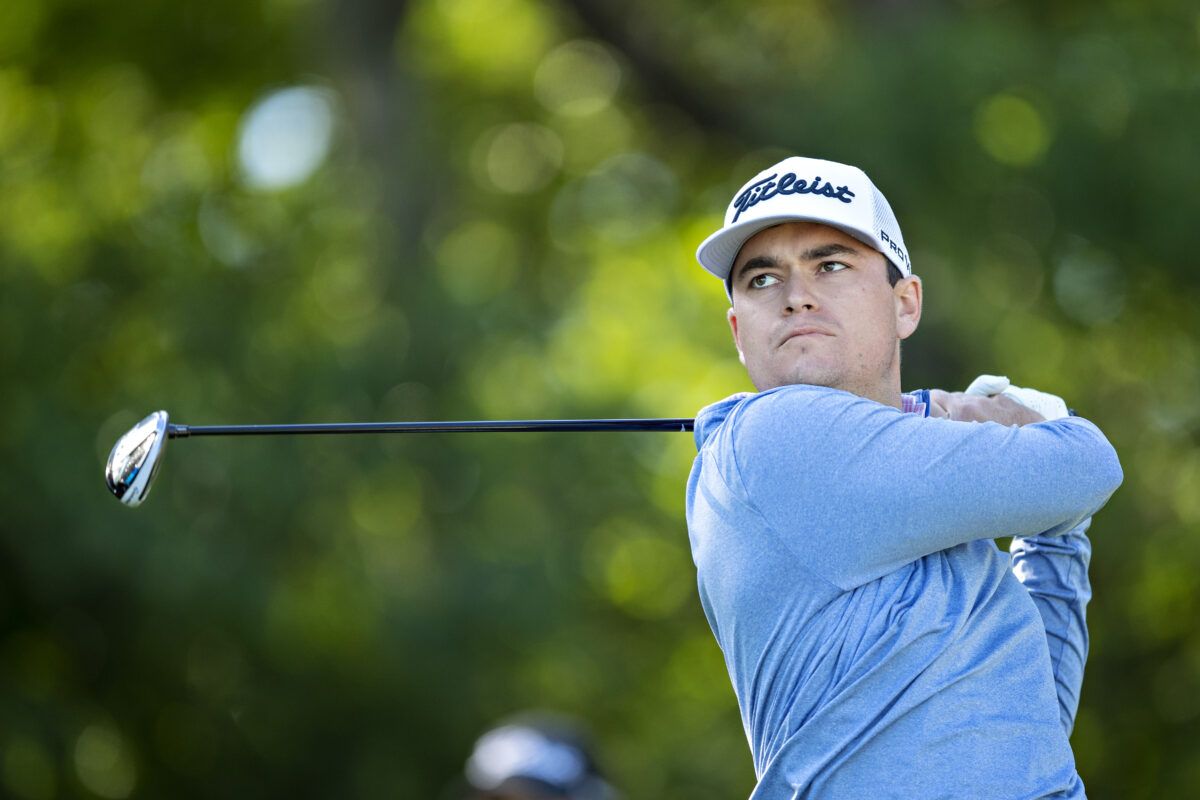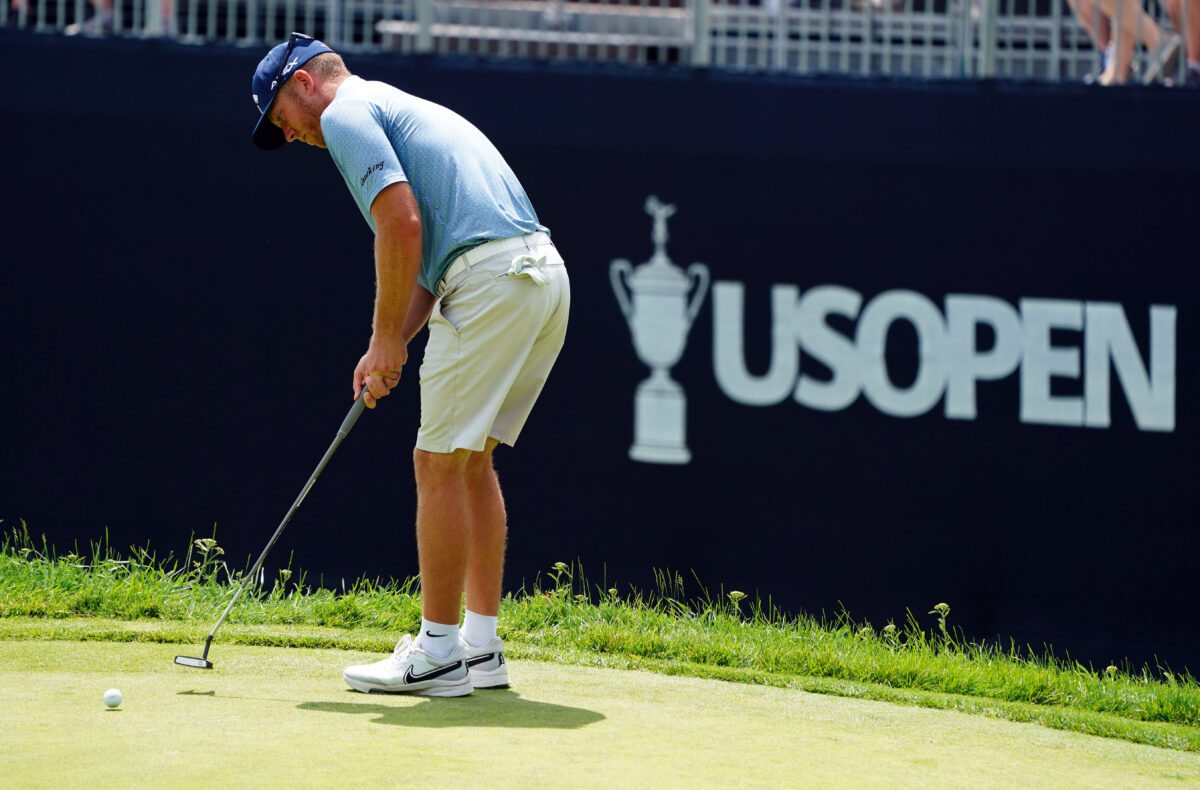[mm-video type=video id=01g5qpdnqsrkbp2r31ee playlist_id=01es6rjnsp3c84zkm6 player_id=01evcfxp4q8949fs1e image=https://images2.minutemediacdn.com/image/upload/video/thumbnail/mmplus/01g5qpdnqsrkbp2r31ee/01g5qpdnqsrkbp2r31ee-c04acce5dfc2c2ddef4a108454667d4d.jpg]
Can the No. 1-ranked player in the world really fly under the radar?
He seems to think so.
“I feel like I’m kind of an under-the-radar person. I don’t really feel like there’s much chatter going around with me. Rory won last week, Tiger was at the PGA,” said Scottie Scheffler, whose reign at the top began in March after he won the WGC-Dell Technologies Match Play Championship. “I’ve been No. 1 in the world for a while now, and it doesn’t really feel like it, so I kind of like just under the radar. I can show up and do my thing and then go home and rest.”
Scheffler, 25, overcame a slow start to shoot 3-under 67 at The Country Club in Brookline, Massachusetts, and share the clubhouse lead with Nick Hardy at 3-under 137. Having already won the Masters in April as World No. 1, Scheffler is trying to join Tiger Woods in rare company. Woods is the only player to win the U.S. Open while World No. 1, doing it three times in 2000, 2002 and 2008.
U.S. Open: Photos | Leaderboard | How to watch
On Friday, Scheffler also tied for the low round of the day – among the morning finishers – with his good friend and roommate this week, Sam Burns.
“I am a little upset he’s beat me by one,” said Burns, who shot 2-under 138 at the halfway point of the 122nd U.S. Open. “But yeah, it’s cool to see him playing well. Obviously he’s had a fantastic year, and it’s kind of motivated me to try to play a little bit better and try to keep up with him.”
Early in his second round, it appeared that Scheffler might be more likely to be flirting with the cut line rather than the 36-hole lead. He chunked a chip from around 40 yards on the tightly mowed grass short of the fifth green and made bogey. Then he took three putts at the par-3 sixth to drop another stroke to par.
“Two silly bogeys early in the round, but outside of that I hit it really good,” Scheffler said. “I was in position most of the day. If a few more putts would have fallen in versus around the edge, it would have been a really special day. But 3-under was a good score for me, especially being 2-over through 6.”
Scottie doesn't know… how to NOT make his way up the leader board!
The No. 1 player in the world is currently tied for the #USOpen lead at 3 under.
— U.S. Open (USGA) (@usopengolf) June 17, 2022
Scheffler, who played at The Country Club in the 2013 U.S. Amateur and is making his fifth U.S. Open appearance, could have been deflated with his start but he proved to be unfazed.
“Hadn’t really made a bad swing yet. But that’s just U.S. Open; it’s just hard,” said Scheffler, who has gained more than six strokes to the field with his approach play through two rounds. “Sometimes I just need to kind of get woken up a little bit. I think using frustration for good versus getting angry is really helpful.”
Scheffler played his last 11 holes in 5 under, highlighted by a hole out for eagle at 14. Scheffler’s second shot at the par-5 clipped a tree and he caught a good lie in the rough. His pitch landed just short of the green and rolled straight for the cup. Caddie Ted Scott leaped in for a chest bump, but their high five could use some practice. NBC’s Mike Tirico called them out for their “awkward celebration.”
SCOTTIE SCHEFFLER 😮
No. 1 is one back. #USOpen pic.twitter.com/Frj1nTp0f1
— U.S. Open (USGA) (@usopengolf) June 17, 2022
But there was nothing wrong with how Scheffler rallied from a sluggish start and kept himself in the hunt for his fifth win of the 2021-22 PGA Tour season and a potential second major title.
“I like the challenge,” Scheffler said of playing in the U.S. Open. “I think these events are really hard obviously. For me it’s kind of fun just challenging yourself like that.”
[vertical-gallery id=778277470]
